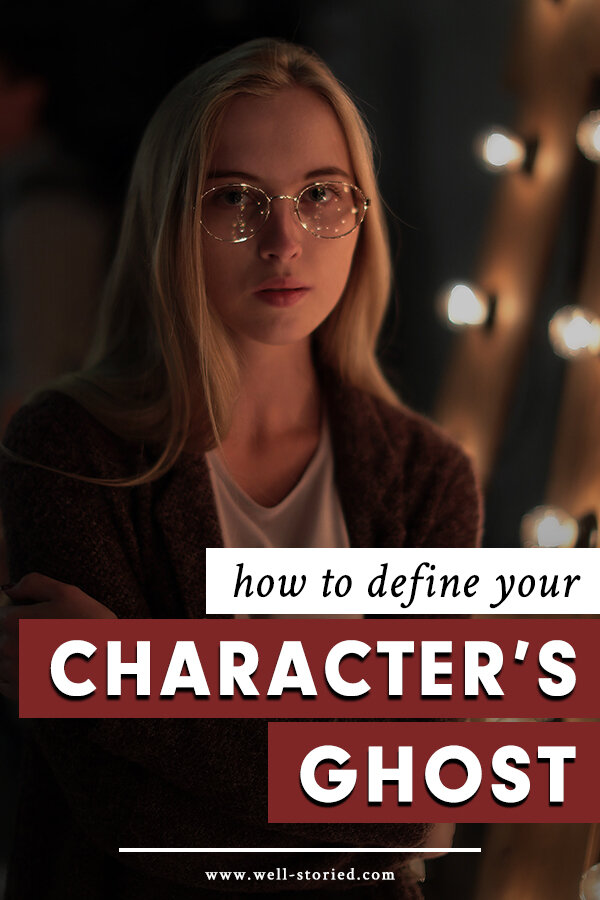How to Define Your Character's Ghost
Photo by Vlad Shalaginov on Unsplash
The events that took place in your characters’ pasts should affect who they are when your story begins.
Backstory provides insight into your characters’ personalities, values, beliefs, and motivations, all of which hold the potential to impact your characters’ behavior and the decisions they make. Backstory also lends your characters a sense of history, of lives that extend beyond the confines of the story you’re telling, ultimately helping readers view your characters as fully-realized.
As evidenced, taking time to develop your characters’ backstories is essential to your novel’s success. With that in mind, I’d like to take an even deeper dive into backstory with you today, exploring the aspect of your characters’ pasts that holds perhaps the greatest potential to impact their present stories. Writers, it’s time to discuss your characters’ ghosts.
What is a character’s ghost, exactly?
No one escapes life unscathed. A character’s ghost is an emotional injury that, though suffered long ago, continues to haunt them into the present day. It’s an internal scar that has never fully healed, an experience they bear as an ongoing burden.
When well-developed, a character’s ghost dredges up strong negative emotions that create conflict in their journey. Though this conflict is internal in nature, it can also spill into words and deeds that cause external harm. A character’s ghost also feeds into the Lie that they believe; the false belief that stands between them and the peace, happiness, or satisfaction they crave.
In many ways, your character’s ghost holds the potential to permeate every aspect of who they are and how they experience life. This internal wound can influence your character’s story goal, motivate them to action, interfere with their relationships, shape their identity, and otherwise impact the way they walk through their world.
Defining your character’s ghost
A character’s ghost typically falls into one of three categories: guilt, grief, or grievance.
1. Guilt
In instances of guilt, your character carries with them a sense of shame, self-reproach, cowardice, or failure for the way they acted at some point in their past. Their decisions at that point in time resulted in terrible and potentially long-lasting consequences, which could be of a personal or external nature.
Sometimes, a character will wrongfully blame themselves for a past event. Other times, characters should feel a sense of remorse for the pain they’ve caused. In either case, guilt often leads characters to believe the Lie that they are unworthy of love, forgiveness, or opportunity.
2. Grief
Some characters are haunted by the ghost of grief, often mourning a death or personal loss. In some cases, a character’s grief might commingle with guilt (e.g. an accidental killing, a job or marriage lost to negligent behavior). In other cases, a character might find themselves unable to heal from the loss of a loved one or struggling to accept a difficult or unexpected turn their life has taken.
3. Grievance
Characters who bear grievances believe they’ve been wronged and cannot forgive or forget this real or supposed injustice. A grievance can lead some characters to simmer with resentment, which can affect their attitude, actions, worldview, and relationships.
Other characters seek vengeance for the injustice they’ve suffered, though fulfilling this goal rarely offers the sense of peace or satisfaction they desire.
It’s not uncommon for a character’s grievance to summon feelings of guilt or grief. In fact, very rarely does a character’s ghost not touch upon several of these internal wounds in some way. For example, a character might seek vengeance for the murder of their child or grieve the loss of a limb suffered in a car accident while driving drunk.
Granted, a character’s ghost needn’t be so horrifying to be effective. Many of us live with the scars of unhappy childhoods, failed romantic relationships, the loss of coveted job opportunities, or words that were better left unspoken. These, among similar instances, can also impact the way your characters move through life.
Some characters’ ghosts will prove a driving force in their stories, shaping their goals, motivations, and internal growth. Other internal wounds might simply serve as a quiet obstacle or low-lying source of tension in your character’s journey to find love, achieve success, or become the person they long to be.
Whatever the case, a character’s ghost needn’t make them an inherently negative or unhappy person. While some characters are defined by their ghosts, others are only haunted by them when placed in circumstances that trigger unhappy memories.
The power of connection in shared suffering
No matter how your characters’ ghosts manifest on the page, this key backstory element is worth considering not only for the vast impact it can have on your characters and their stories but for the emotional connection it can forge with readers.
As I mentioned earlier, no one escapes life unscathed. We all bear the scars of the lives we’ve lead. And no matter how well we handle those scars, they doubtless still ache from time to time. This suffering is something we all share. No matter the varied sources of our pain or the differences in our life experiences, the reality of our suffering connects us.
This potential for connection is important to bear in mind when crafting stories. Characters are the backbone of plot. If readers don’t first care about our characters, then they won’t care about stories. It’s therefore vital to encourage readers to connect with our characters, and these ghosts from our characters’ pasts can prompt this connection.
By allowing your characters to suffer emotional wounds, you encourage readers to empathize with your characters and invest in their stories. You play your role in forging the reader-character connection that keeps readers turning pages.

